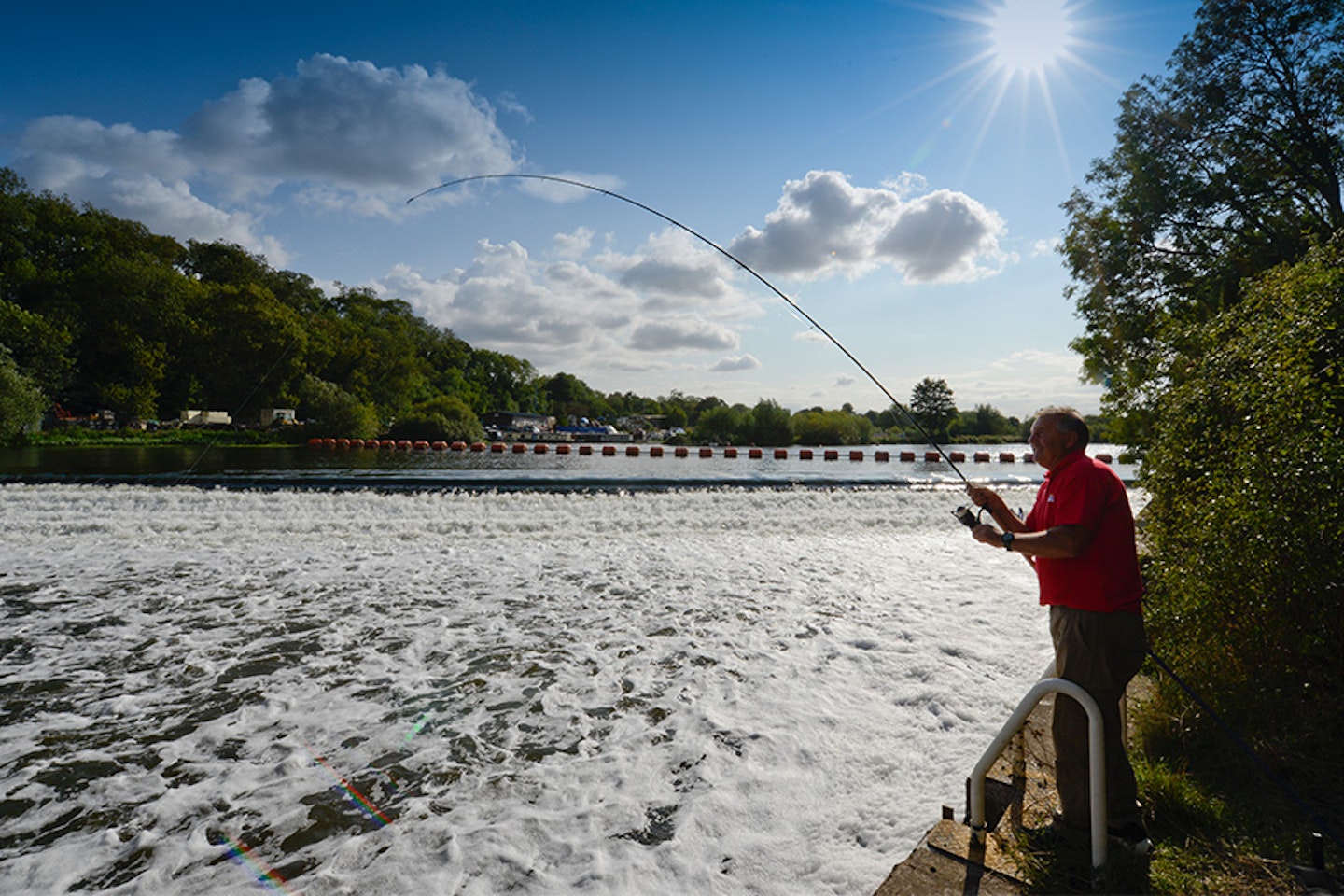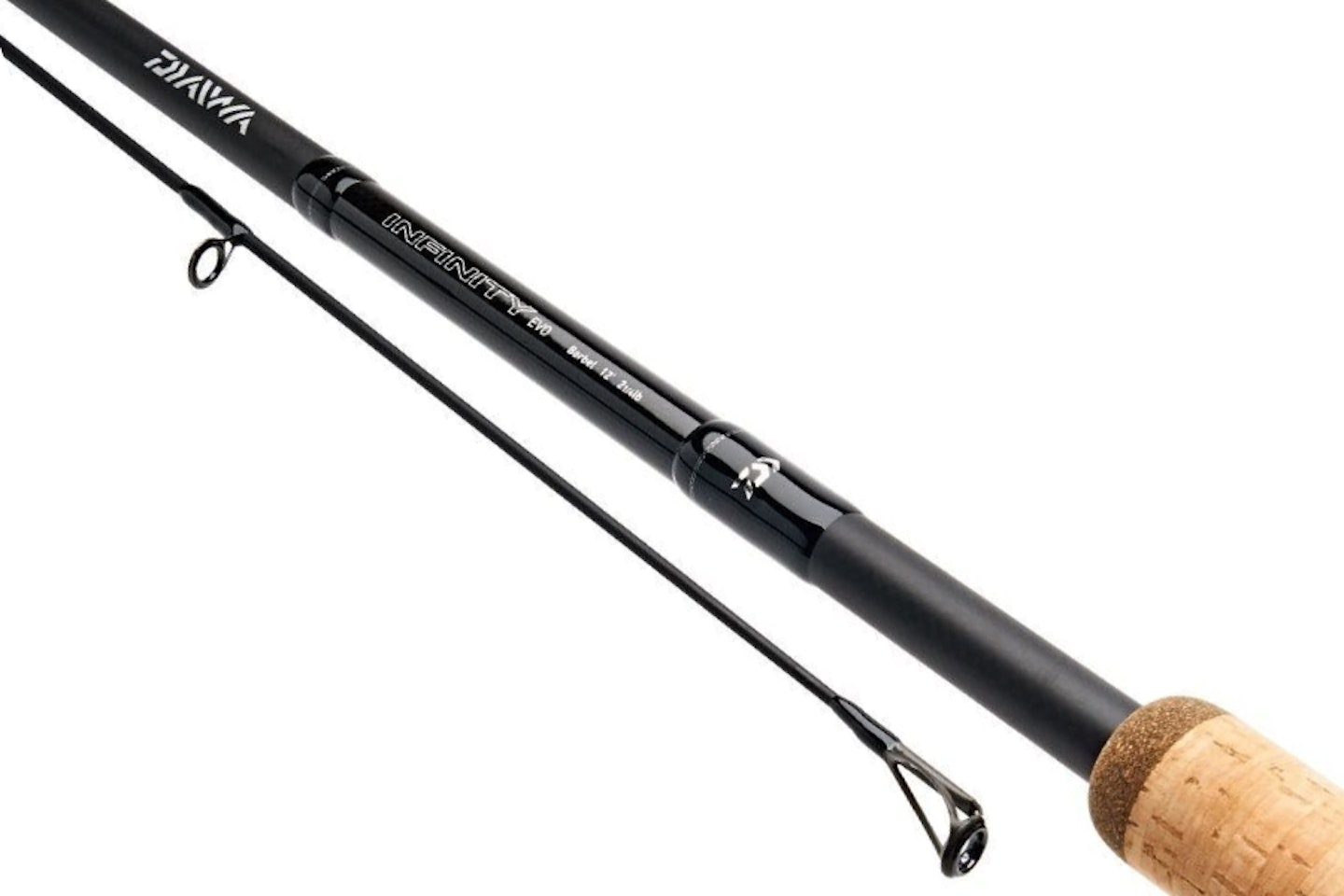Barbel fishing has become an increasingly popular branch of angling, with big fish being more accessible than ever. Now is the time to get out there and catch some of these majestic creatures, but you will need specialised tackle to do so, in particular, one of the best barbel rods, these can be in different guises from heavy/long distance feeder rods to specialist twin top rods.
Large rivers, like the Trent, require big feeders, long casts and stronger tackle. The smaller chalk streams, however, like the Itchen or Hampshire Avon, require more finesse. On these rivers, you can try a mobile approach, light link leger tactics, freelining or rolling baits through a swim, which will require a much lighter rod that you can easily hold all day.
Best barbel fishing rods 2025 at a glance
In this guide we look at the best barbel rods capable of handling the demands of barbel fishing and which are suitable for the type of angling you favour. Hit and hold on small rivers, or big chucks into fast flows on larger waterways, there is a rod for everyone below, whether you are a beginner or a seasoned barbel angler.
How we test the best barbel fishing rods
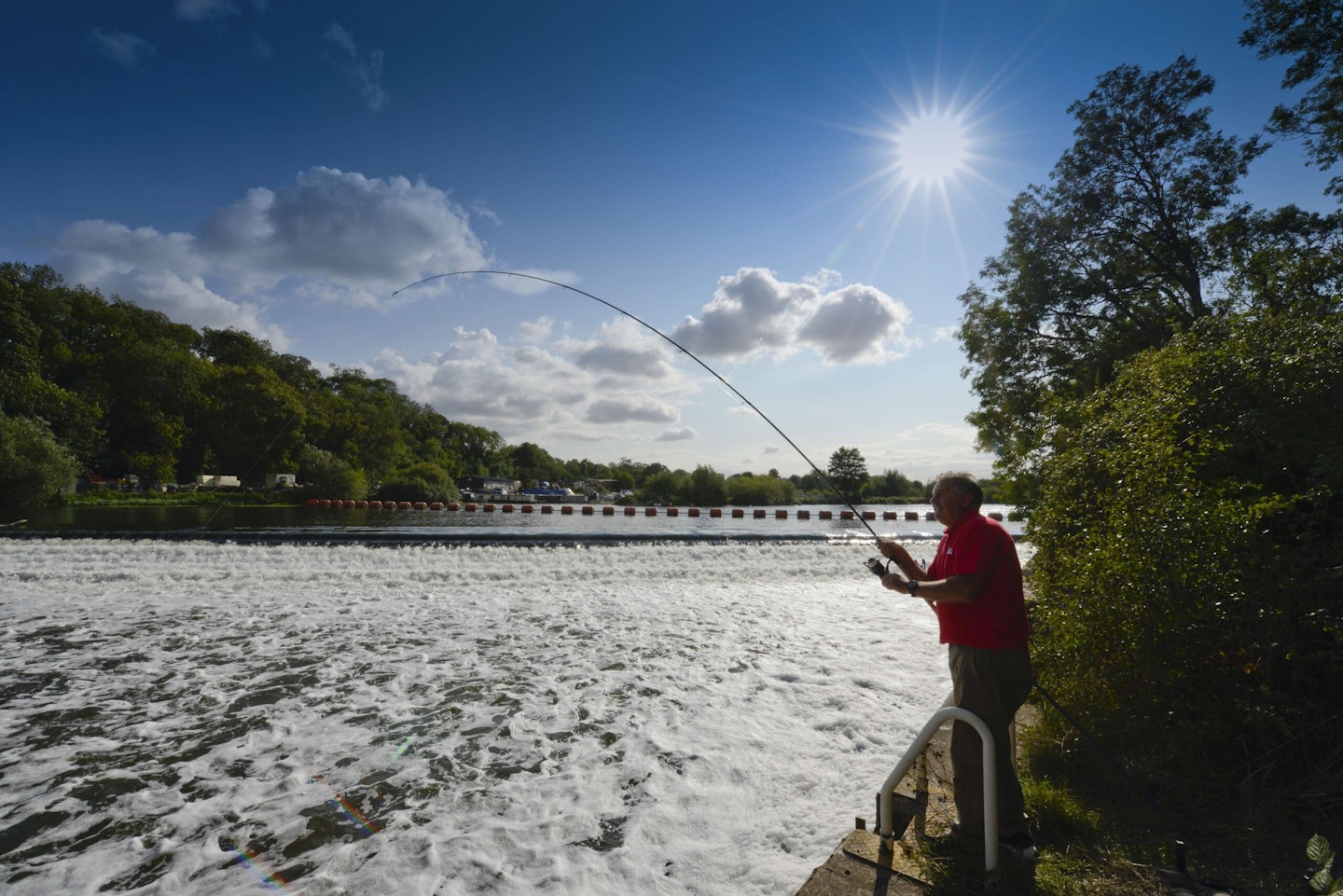
These barbel rods were tested by experienced members of the Angling times team. We have been using and abusing rods like these for decades and have probably used most, if not all of them during our time on the bank, so we know the best from the rest!
Tackle testers, Mark Sawyer and Aidan Bordiuk have been testing a variety of barbel rods in varying scenarios to ensure they perform how they are supposed to for the given method they were designed! Whether it be feeder fishing, trotting with big floats or rods for rolling meat, they have been thoroughly tested on rivers big and small so we can give a rounded review!
Our decision process of what makes the best barbel rods takes into account various factors including price point, strength, build quality and versatility to ensure we can give you the best advice on factors that will make an actual different to your angling.
The following list includes a mixture of our favourites for all types of barbel fishing you are likely to encounter! Find out how we test our gear, HERE.
The newly updated Korum 3K Barbel rods suit the needs of the modern big-fish river angler, each of the four models comes complete with a white tip for bite detection, tough SiC lined rod guides and slim, full cork handles. All rods feature an anti-frap tip guide and pack down into two equal lengths for easy storage.
These rods are stunning, and if I didn't know the price when opening the bag up, I would have said they were circa £100-£150, but the fact they can be picked up for around the £50 mark is staggering.
There are a few rods in the range but I opted to test the 2lb model, taking it to the formidable River Trent. Being as this is one of the most popular places to fish for barbel nowadays, I wanted to put it through its paces here so that more anglers could relate to the review.
The rod is quite pokey in the 2lb 12ft model, so it definitely serves more to these larger rivers as I think it would be a little overpowering for your smaller streams where the 1.75lb model would be far better suited. Casting heavy 4-6oz feeders two thirds across the river was no issue at all, and the white tip just makes it a little easier to read what is going on, particularly at night as they really illuminate under a headtorch.
The barbel I landed on the day were no match for the Korum 3K rods, and although they ran into double figures, I could easily guide them away from any rocks or submerged hazards when I have lost fish before.
The finish on the rod is sublime too, I really liked the carbon look that Korum have used as it adds a premium feel to the rod. The handle is the right length, something that is often overlooked when building rods, as you can really push into the cast and lock it under your arm securely when playing a big barbel.
This range is really comprehensive and is ideal for beginners or those anglers who don't have a fortune to spend on some of the higher priced models. What I will say is, even if you have the money these rods perform way above their price tag and are well worth a buy!
Pros
- Comprehensive range of rods
- White tip aids bite detection
Cons
- A 1.5lb model would complete the range
You’ll be hard pushed to find anything better than the Daiwa Infinity EVO Barbel rod. It is a sublime piece of equipment built on a high volume carbon blank which makes for an incredibly slim, lightweight rod that, in the 2.75lb version, will cast big feeders with ease and precision.
The rod was so good in fact, I didn't want to use it in case I damaged such quality craftsmanship, but such is my determination to get you the best reviews, I twisted my own arm and used it (it was a difficult decision I promise).
The Infinity Eco is surprisingly light considering what it is designed for and capable of, even when I was casting feeders upto 8oz at no point did I feel the rod was struggling, I would even go so far as to say you could use more. The guides are large and practical to prevent any chances of line wrapping round them during the cast leading to almighty crack-offs.
Of the three models tested, my favourite had to be the 2.25lb model, while it isn't the most powerful in the range, my barbel fishing takes me to rivers all over the country from the Hampshire Avon, to the mighty River Thames and this rod is a true all-rounder, you can do anything with it. If you only fish bigger venues in any conditions, the 2.75lb Daiwa Infinity EVO Barbel Rod is the one to go for as I can't imagine a scenario where it would really struggle, you could even use them for carp fishing.
When I hooked a barbel I could see why they were as expensive as they were, the blank bends all the way to the butt, seamlessly I might add, to ensure every bit of power is utilised, while reducing the chance of hook pulls or breaks as it absorbs the lunges from the fish.
The 1K woven blank is very hardwearing to provide you with a rod that looks fantastic now and will continue to perform for years to come. In summary, this is a simply outstanding barbel rod!
Pros
- Capable of performing on any UK river
- Lightweight, powerful and durable
Cons
- Not as light as some rods
The Guru N-Gauge Specimen Dual Tip Barbel Rod has been developed with 30 & 40 Ton tensile strength carbon to create a progressive power action. This allows the rods to bend throughout the whole blank, gaining more power progressively. Simply put, the more the rod bends the more powerful it becomes, perfect for taming all sizes of barbel. The chosen carbon also makes for a much lighter, well-balanced rod that is very comfortable to use and play fish on during those prolonged fights barbel are recognised for.
These rods are really impressive considering that Guru have only just ventured into the specimen fishing market. The Dual Tip range covers just about everything barbel fishing, if you prefer a more match style approach, their feeder rods are superb for that style of fishing, great on low clear rivers and bigger swollen ones alike. The quiver tips are really special as well, they won't break easily when casting bigger than average feeders and are great for putting a bend into when fishing for dropback bites.
The Barbel rod is where we really turned our attention too, however and it deserves the name barbel rod as it is just that, perfect for barbel. There is adequate power in the blank to cope with big leads and full feeders as well as being really capable of landing big fish. The anti-tangle Sea-Guides that adorn the rod are really durable meaning they won't break easily under pressure or when dropped on rocks and they will help the line flow ore freely when casting.
Pros
- Lovely fish playing action
- Very comfortable to use
Cons
- Lacks a bit of power for extreme ranges
The slim, lightweight and exceptionally balanced 15ft Drennan Acolyte Specimen Float rod is ideal for rivers where quality fish are expected. It is slightly more powerful than the 15ft Acolyte Plus and a great choice for casting and controlling heavier floats and baits.
As far as I am concerned, there isn't a better rod for trotting on river than the Acolyte range. Having owned the original and slowly changed as Drennan have upgraded the rod, this Acolyte Specimen version is simply the best rod you can use to catch barbel on the float. The rod is so incredibly lightweight that holding it, and manoeuvring it to control a float is a breeze, even when some rods get a little sloppy at 15ft, the Acolyte still performs incredibly well.
The rod bends all the way to the butt, ensuring you have enough power to land the fish, but are also far less likely to suffer breakages when using lighter mainline and hooklinks. While I appreciate there are cheaper rods out there, this is a best guide and I don't think you can find a better rod to trot with, there is a reason you see it in the hands of all the top specimen hunters in the land!
Its slim profit helps you whip the rod through the air on the strike which I have found helps me hit more bites as a result, especially if you get one a long way down the swim. I use anything from 4xno4 stick floats to 12g Avon style floats and the Acolyte has no issue with either, helping you control a float in any river even with extra water on.
Pros
- Incredibly light and well-balanced
- Aesthetically beautiful
- Superb for all styles of float fishing on rivers
Cons
- A little cumbersome on overgrown, smaller rivers
A capable rod, that meets the needs of all round anglers, the Daiwa Theory 12ft Speci Barbel & Tench rods tick all the right boxes. Supplied with an Avon-style top, this rod is perfect for targeting barbel on smaller river.
This rod has a maximum casting weight of 110g, while that isn't particularly heavy in the barbel fishing world, it does lend itself to smaller more intimate river where the barbel fishing is a bit more delicate. This rod shines in those instances and is great for link legering under snags, rolling lumps of meat between weedbeds or even trotting if the situation arises.
If you enjoy playing barbel here rods will be right up your street, they really help maximise the enjoyment without putting the barbel or you under anymore stress than you need to as the poor is there to put the brakes on when needed.
They also feature excellent tip recovery, meaning the rod tip springs back quickly after casting, aiding both accuracy and distance. Additionally, the progressive playing action cushions sudden lunges, reducing the risk of hook pulls during a fight.
You can watch Mark's full review on our YouTube channel here...
Pros
- Capable of handling upto 15lb reel lines
- Versatile specimen feeder rod suited to rivers and stillwaters
- Also makes for a great floater fishing rod
Cons
- Would like to see a dual tip option with quiver tip
The Daiwa Tournament SLR has been hailed as the best feeder rod ever produced, and we can’t help but agree with that assumption. With 6 variants in the range from 10ft (75g) to a 14ft (280g) offer true versatility.
Its enhanced casting performance comes in the form of Daiwa’s X45X Full Shield and HVF (High Volume Fibre) Nanoplus carbon technologies, this has assisted Daiwa to rework the blank to produce this true casting tool, its biggest benefit is much more accurate casting with greater payloads.
I won’t beat about the bush with the live test details, because if you’re in the market for a rod of this ilk, you’ll already know quite a lot about its pedigree and capabilities. With prices ranging from £490 to £565, that sort of quality doesn’t come cheap, and if you’re thinking that no-one pays that sort of money for a few metres of carbon, take a walk around any feeder match and you’ll see plenty of them.To me, the rod that stood out from the five in the latest range is the 12ft three-piece model.
Is it really that good, can it really be that much better? Well, what I can tell you straight off the bat is that it’s one heck of rod. Alpha technology eliminates potential flat spots with hardly any added weight. The end result is a blank crisper than an iceberg lettuce, with a fluent, almost fluid action you need to experience for yourself. Improved quiver tips, superb aesthetics and a blank with almost infinite power, creates a rod that is at the top of it's class.
The only complaint I have is that Daiwa’s Ryan Hayden, who I’m sure you’ll agree took some stunning photos for me on test day, took away the rods in his van. So it was nothing more than a day’s romance for me. It was, though, love at first cast.
The Daiwa Tournament SLR is the perfect feeder rod for those big fast flowing rivers to search out those big barbel, its more than capable of delivering payloads sufficient to hold in the flow.
You can read Mark's full review of the Daiwa SLR here...
Pros
- Incorporates the latest technologies to give the best possible experience
- Offering up to 280g casting weight in 14ft model
Cons
- Very specific, has attributes that lend itself to very specific styles, and wouldn’t be suited as a multi use rod.
Best Premium All-round Barbel Rod
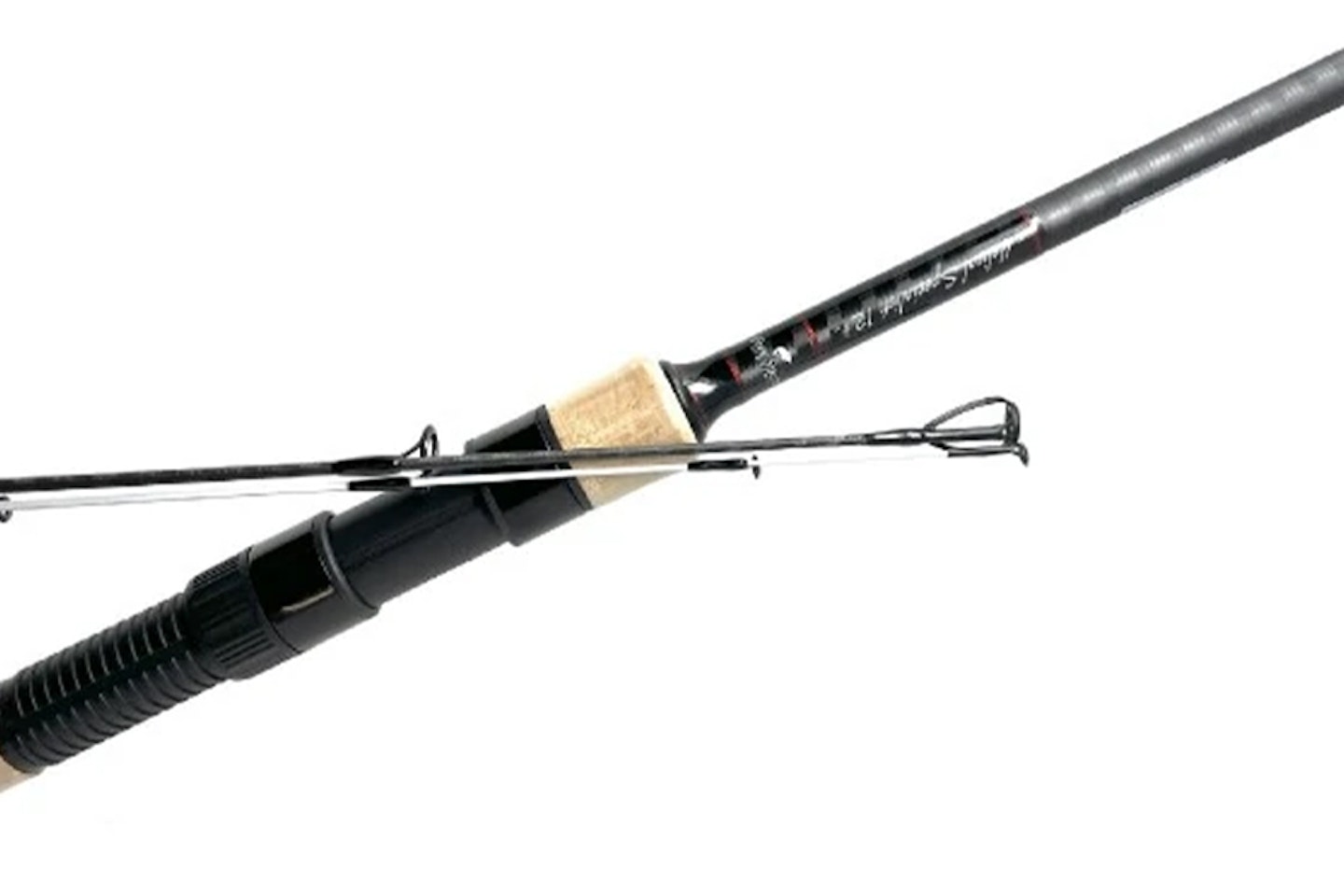
johnsonrosstackle.co.uk
Constructed from the best Japanese carbons and fitted out with super modern black reel seats and matching black framed guides, the Free Spirit Helical Specialist Barbel Twin Tips are some of the most aesthetically pleasing specialist rods we have seen. No paint or lacquer has been added to the blank to ensure the rod will continue to look as good as the day it was bought.
Not just pleasing on the eye, Free Spirit designed this rod to be versatile to offer the angler a rod for a variety of situations. A 1.75lb test curve tip is included for larger baits and powerful rivers, whilst the quiver tip section allows the angler to employ more stealthy tactics such as small feeders or link legers. This is especially useful later in the season when the barbel have seen some pressure, a rod for all seasons.
Pros
- Twin tips included.
- Premium features throughout.
Cons
- Not the best for fishing in really extreme conditions.
Best Barbel Rod for rolling baits
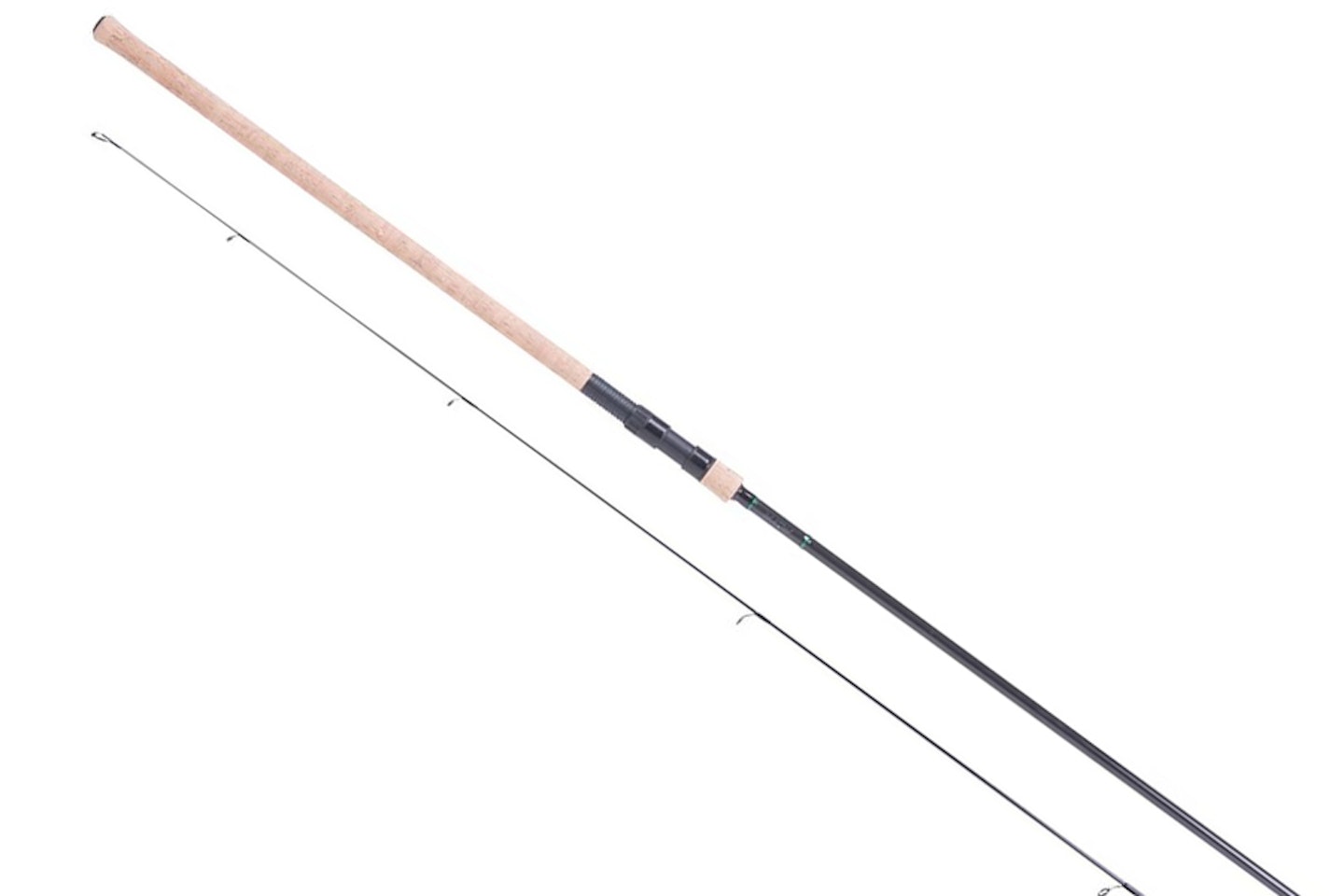
www.ebay.co.uk
Whilst not a dedicated barbel rod, the 12ft, 2.25lb Wychwood FLTR rod is an ideal tool for those who like to stay mobile and use rolling baits.
Due to its nature, this rod is designed to be held all day and, as such, has a lovely lightweight blank that’s perfectly balanced…you almost forget you’re holding it at times. With a full cork handle for comfortable grip and a hook ring included, it makes moving around efficient, with a 10ft option available to aid fishing tight swims.
I really like this rod, in fact I own one, and on days when I am opting for a roving approach, whether that be a couple of hours after work or a quick evening session, this is my rod of choice and for the price it is unbeatable! As the blank is so light, it is the perfect rod in my opinion for rolling baits, as you don't get any fatigue in your arms and walking around with it as you move between swims is so easy.
On top of that, the fast through action really help strike the hook out of baits like meat, enabling you to hook more fish. The tip is lovely too as the quality carbon highlights every vibration as a bait trundles along the gravel, helping you distinguish between bites and hang-ups.
Pros
- Fast line pick up
- Really lightweight, balanced blank
Cons
- Not designed to cast heavy end tackle
Best Value Barbel Rod

www.total-fishing-tackle.com
There are three 12ft offerings from Sonik in the Angl-R Barbel Rod range, a 1.75lb, 2lb test and a 2.5lb test curve option. The high modulus carbon blanks make for lovely, light, well-balanced rods. Whilst a sensitive tip with plenty of power in the butt section lends this rod to catching and taming even the wariest of barbel, featuring anti frap rings, slim cork handle and down locking reel seat.
If you enjoy roving and rolling baits through a swim, the light blank makes this rod a joy to hold all day without tiring your arm, and the 1.75lb test curve is sensitive enough to emphasise even the slightest of touches to your bait, whilst the 2.5lb has enough power to cast 6-8oz leads and tackle even swollen rivers.
Pros
- Lightweight.
- Plenty of power in the blank.
Cons
- Would like to see an isotope holder.
What to look for in a barbel rod
With barbel frequenting such a diverse range of venues that can change so quickly with the weather, the tackle needed to fish for them effectively can vary massively. From casting large feeders and leads out on big, powerful rivers like the Trent and Wye to rolling meat or trotting a float on more intimate rivers like the Hampshire Avon, the rod you choose needs to be up to the task.
If you primarily fish stationary on large rivers, it's best to choose a rod with some backbone. A barbel rod with a test curve of 2lb or more would be ideal, as it offers the versatility to fish lighter when needed and balances better when using a barbel reel. However, should the river levels rise and you need to increase the weight of your end tackle, this rod can easily handle the added demand, so you don’t have to worry about changing conditions. It also provides the extra power needed to guide large fish against the current and away from snags, ensuring they can be safely landed.
If you prefer a more roving approach on smaller rivers or enjoy rolling baits like luncheon meat, a big, powerful rod would be very cumbersome, heavy and uncomfortable to use. In this scenario, a lighter rod ranging from 1.25-1.75lb test curve would make the fishing far more enjoyable and not be too overpowering that you can't enjoy the fight. These rods also tend to be much lighter to hold all day, there is nothing worse than holding a heavy rod all day that causes you to fatigue and not fish effectively.
Glossary
Blank: The hollow carbon fibre tube that the rod is made from, attached to which are the guides and handle.
Guides: The rings that line the length of the rod that the line passes through.
Reel Seat: The part of the handle that your reel attaches to. Almost all UK coarse rods have screw-down reel seats, where the fore-grip on the handle rotates and closes the seat to hold the reel in place.
Test Curve: Usually measured in pounds, it's the weight that needs to be applied to the end of the rod to make it bend over 90 degrees. The greater the test curve, the more powerful the rod.
Casting Weight: Depending on the manufacturer, it is either the best suited or maximum total weight in grams that you should cast with your rod. You will normally find your rod will perform best at around half its total casting weight. E.g. a 120g feeder rod best suits a 60g feeder.
Quiver tip: The very top (often brightly coloured) section of a feeder rod, used to identify bites, which bends and 'quivers' when a fish moves off with the bait. Like the test curve of a rod, quiver tips are often rated in test curves measured in ounces.
Fish playing action: A way of describing how good a rod performs when reeling in a fish. A rod with a good fish-playing action will provide plenty of cushion to a thrashing fish, preventing hook pulls (lost fish) and line breakages.
Progressive Action. A rod that quickly powers up from its tip through to its middle area, providing the ideal coordinated playing action for powerful fish.
Tip action: This normally applies to traditional three-piece float rods that need a 'tip or tippy action' to be able to whip out light floats when casting, as well as pick-up line very quickly on the strike.
Through action: A rod that has a softer top section but still produces a cushioned bend throughout its entire length, giving a good fish-playing action.
Parabolic Action: A rod that can bend throughout its length but stiffens towards its butt section, providing a controlled cushioning action when playing a fish.
Rod taper: How a rod changes in diameter along its length. A fast taper rod will typically thicken up very quickly as you move away from the tip. Although other factors come into play, like carbon types, weave and construction, typically, a fast taper rod will bend more at the tip than the butt (tip actioned).
Frequently asked questions
Will a rod with a bigger casting weight or test curve rating cast further?
Yes, when combined with extra length, you will be able to achieve greater distances with the correct technique and a weight that matches the rod. Be aware that the more powerful your rod, the stronger the line and hooks you will need to use to prevent fish losses, which could, in turn, mean you fooling less fish into taking your bait to start off with.
Should I choose a cork or EVA handled rod?
This all comes down to personal preference. Cork is lightweight, transmits more feeling to your hands when playing a fish and looks great. EVA, however, is cheaper and more durable. Many rods have an abbreviated or combined cork/EVA handle, with the material best suited to a particular part of the handle used to give the best of both worlds.
Should I choose a rod that will cast the furthest distance that I will want to fish?
No, you should choose a rod that best suits the distance that you want to fish at. A rod that is too long and powerful will make casting short distances with any kind of accuracy difficult and will have a poor fish playing action. This is why all rod ranges feature models of varying lengths and powers.
Can I use the same barbel rod for both float a feeder fishing?
Not generally, no. Barbel rods are designed to be much more powerful and, therefore, heavier, making them very cumbersome to hold all day. They also have a poor line pick up speed, making them very difficult and inefficient to use for float fishing.
What are rod test curves and what do they mean?
Quite simply it is the weight required to pull a rod tip to a 90-degree angle to the rod butt when the rod is held in an upright position. They can also be used as a rough rule-of-thumb guide for the rod's weight casting potential.
Why are some of the barbel rods so stiff?
Some of the more powerful rods are designed to be stiff to reduce recoil and improve their recovery rate to aid casting a long way. With the minimal amount of tip movement after casting, friction is reduced which prevents the line slowing down the cast, allowing for further casting.
What is the best rod to buy for barbel fishing?
Unfortunately, there is no one-size-fits-all rod due to the varying methods and environments barbel can be found in. Some rivers require stealth and finesse, whilst others require a much more aggressive approach, with heavy baiting and big feeders. It is best to ask yourself what type of situation you will be fishing the most. If your venue responds to roving around rolling baits, there is little point you buying an expensive rod that is heavy and will make holding it all day impractical. Conversely, a lighter rod will be little use at casting large feeders into a strong current on large rivers like the Trent.
Author Aidan Bordiuk is an enthusiastic angler who enjoys all fishing disciplines from match fishing to beach casting. He is currently occupying the position of Digital Editor at Angling Times.


